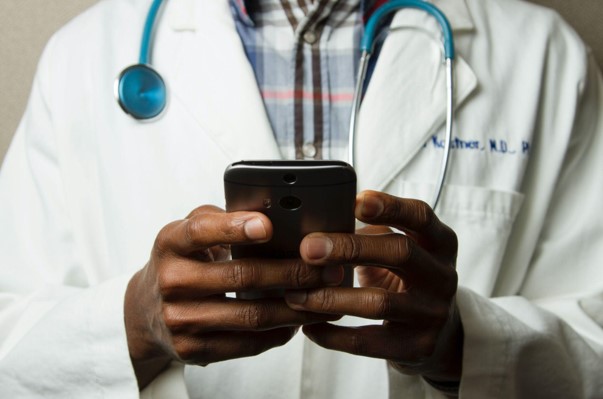
@ShahidNShah


Today, it is getting increasingly common for patients to have higher expectations regarding the level of care they receive. They want care tailored to their specific needs and accommodate their busy schedules and unique lifestyles.
Digital modes of healthcare delivery are trying to do the exact thing. Picture an app that enables women in remote areas to receive video diagnoses and conveniently order and receive birth control pills. Now, a woman in need can access birth control from her home. Otherwise, she would have to travel long distances to visit a doctor and get a prescription.
According to CoachCare, digital health monitoring also has the potential to enhance patient outcomes, lower medical expenses, and revolutionize the provision of care. This blog post will take you through some exciting developments in this realm of healthcare. It is time you jump on the Digi-care bandwagon.
Heart disease is one of the most fatal health conditions in America. According to the American Heart Association, there is a risk of a heart attack every 40 seconds.
Remote patient monitoring solutions have been a game-changer in this respect. They enable healthcare providers to monitor their patient’s health status from afar. Wearable ECG devices for heart patients allow for real-time tracking of delicate heart-related parameters. This seamless transfer of patient information enables prompt interventions and customized treatment modifications.
Diabetes, another serious chronic condition, is also looming on the horizon. In 2022, the overall estimated cost of diagnosed diabetes amounted to a staggering $413 billion in medical expenses and the impact on productivity.
Continuous remote glucose monitoring systems have been a revelation here. The doctor, sitting thousands of miles away, can assess the daily updated readings and prescribe corrective measures for the patient.
A remote patient monitoring platform can affect costs in various ways. This includes shorter interactions, less travel, scope for scalability, and higher revenues. Moreover, it also shifts certain aspects of care from clinicians to technology or even to the patients themselves.
Let us start the proceedings with an alarming piece of fact. As per the World Health Organization (WHO), there is a projected deficit of 10 million healthcare workers by 2030. This is exactly where wearable devices can be extremely valuable in saving lives.
A heart specialist at your center can monitor multiple patients spread across countries. It could be a group with ECG devices from Zambia in the mornings and 4 patients with colorimetric tattoos from Germany! Access to medical care is getting revolutionized.
These devices provide a practical solution for remote health monitoring, offering timely assistance and saving lives.
Even smartwatches can make a huge difference in monitoring health. Long gone are the times when wearable devices were merely extravagant step counters.
Now, people can track a plethora of daily vitals, like heart rate and oxygen levels, on their smartwatch. To put things into perspective, the smartwatch industry is poised to hit a valuation of over $47 bn in 2024!
Some even come with sleep trackers to help your patients with disturbed sleep cycles.
The real magic of wearable devices is that a patient can have their medical data transmitted to concerned healthcare professionals regularly. This allows experts to spot trends and intervene before a health issue gets serious.
Given an option, what would anyone prefer—taking their car keys and driving to a clinic or talking to their doctor in their pajamas over a secure video call? The latter, right?
Welcome to the world of telemedicine – the game-changer in digital health monitoring. This model of care leverages secure messaging and video platforms to deliver virtual care when things can be managed with consultation.
One of the most important factors in delivering care over the Internet is these services are secure and HIPAA-compliant. Integrating telemedicine with other digital facets of care, like wearable devices can be exciting. Imagine a doctor in your center on a video conference with their patient and the latter is discussing their vitals directly from a wearable ECG machine! It is akin to them being there in your clinic.
It is all due to the beauty of artificial intelligence and machine learning. AI algorithms have a remarkable ability to analyze vast amounts of data, uncovering intricate patterns and trends that may elude human perception.
To sum up, times are changing. To have the power to heal people living on different geographic corners is a miracle. By embracing these digital advancements in healthcare, you offer hope.
With technological advancements advancing at an unprecedented pace, the healthcare system stands on the precipice of a new era. By embracing digital care, you can be a part of a movement warranting accessible, efficient, and patient-centric care.

Chief Editor - Medigy & HealthcareGuys.
Online therapy has become the modern way to democratize mental health services. Growing in popularity every year, it has made both talk therapy and psychiatric services accessible and cheap. However, …
Posted May 29, 2024 Targeted Therapeutics Behavioral Health Health Technology Mental Health Digital Therapeutics
Connecting innovation decision makers to authoritative information, institutions, people and insights.
Medigy accurately delivers healthcare and technology information, news and insight from around the world.
Medigy surfaces the world's best crowdsourced health tech offerings with social interactions and peer reviews.
© 2025 Netspective Foundation, Inc. All Rights Reserved.
Built on Apr 9, 2025 at 12:33pm